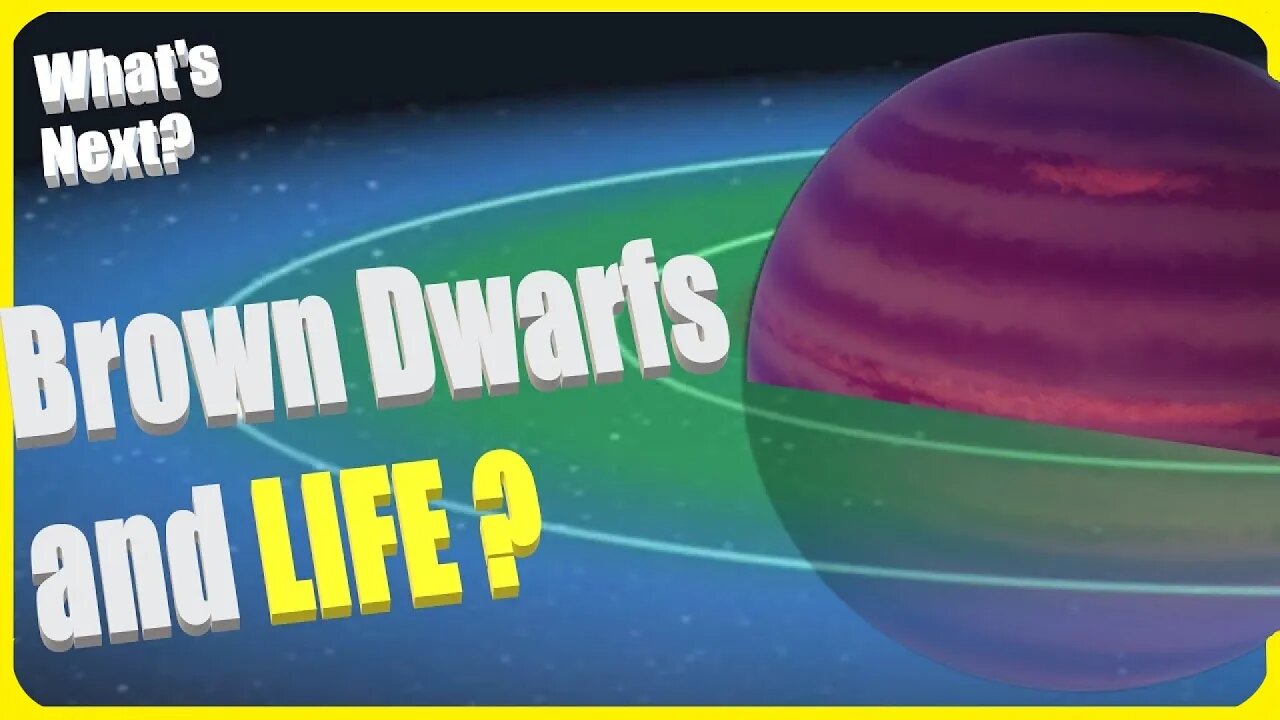Premium Only Content

Can BROWN DWARF Solar Systems Support Life?
WhatsNextVids on RUMBLE - https://rumble.com/user/WhatsNextVids
What's Next? on ODYSEE - https://odysee.com/@WhatsNext:5?view=content
Whats.Next on BITCHUTE - https://www.bitchute.com/channel/Yq06nyAcliTf/
Patreon - https://www.patreon.com/user?u=37594401
Buy Me A Coffee? - https://www.buymeacoffee.com/whats.next
Donate With Cash App - https://cash.app/$YTpayments
Get Mentioned In Future Videos By Joining PATREON For As Little As $5 A Month
(and gain access to DOZENS of videos!)
Support Direct Improvements To The Channel With BUY ME A COFFEE
Or Make Direct Contributions With No Strings Attached With CASH APP
WANT MORE GREAT CONTENT?
SUBSCRIBE TO THESE GREAT CHANNELS!
Vega Astro - https://www.youtube.com/channel/UCejLQCRfKR1XAmDeRRv3ifA
Terran Space Academy - https://www.youtube.com/channel/UCGzgxO2YKjk9yYKLwBjyeVA
Mars Matters - https://www.youtube.com/channel/UCPFLOxf5-AgE0QlaXhzol_Q
Brown Dwarf study - https://iopscience.iop.org/article/10.3847/1538-4357/ab5b13
Brown Dwarves Dwarf Brown dwarfs are substellar objects that are not massive enough to sustain nuclear fusion of ordinary hydrogen (1H) into helium in their cores, unlike a main-sequence star. Instead, they have a mass between the most massive gas giant planets and the least massive stars, approximately 13 to 80 times that of Jupiter (MJ). However, they can fuse deuterium (2H), and the most massive ones ( 65 MJ) can fuse lithium (7Li).
Astronomers classify self-luminous objects by spectral class, a distinction intimately tied to the surface temperature, and brown dwarfs occupy types M, L, T, and Y. As brown dwarfs do not undergo stable hydrogen fusion, they cool down over time, progressively passing through later spectral types as they age.
Despite their name, to the naked eye, brown dwarfs would appear in different colors depending on their temperature. The warmest ones are possibly orange or red, while cooler brown dwarfs would likely appear magenta to the human eye. Brown dwarfs may be fully convective, with no layers or chemical differentiation by depth.
Though their existence was initially theorized in the 1960s, it was not until the mid-1990s that the first unambiguous brown dwarfs were discovered. As brown dwarfs have relatively low surface temperatures, they are not very bright at visible wavelengths, emitting most of their light in the infrared. However, with the advent of more capable infrared detecting devices, thousands of brown dwarfs have been identified. The nearest-known brown dwarfs are located in the Luhman 16 system, a binary of L- and T-type brown dwarfs at about 6.5 light-years (2.0 parsecs). Luhman 16 is the third closest system to the Sun after Alpha Centauri and Barnard's Star.
Brown Dwarves Dwarf Brown dwarfs are substellar objects that are not massive enough to sustain nuclear fusion of ordinary hydrogen (1H) into helium in their cores, unlike a main-sequence star. Instead, they have a mass between the most massive gas giant planets and the least massive stars, approximately 13 to 80 times that of Jupiter (MJ). However, they can fuse deuterium (2H), and the most massive ones ( 65 MJ) can fuse lithium (7Li).
Astronomers classify self-luminous objects by spectral class, a distinction intimately tied to the surface temperature, and brown dwarfs occupy types M, L, T, and Y. As brown dwarfs do not undergo stable hydrogen fusion, they cool down over time, progressively passing through later spectral types as they age.
Despite their name, to the naked eye, brown dwarfs would appear in different colors depending on their temperature. The warmest ones are possibly orange or red, while cooler brown dwarfs would likely appear magenta to the human eye. Brown dwarfs may be fully convective, with no layers or chemical differentiation by depth.
Though their existence was initially theorized in the 1960s, it was not until the mid-1990s that the first unambiguous brown dwarfs were discovered. As brown dwarfs have relatively low surface temperatures, they are not very bright at visible wavelengths, emitting most of their light in the infrared. However, with the advent of more capable infrared detecting devices, thousands of brown dwarfs have been identified. The nearest-known brown dwarfs are located in the Luhman 16 system, a binary of L- and T-type brown dwarfs at about 6.5 light-years (2.0 parsecs). Luhman 16 is the third closest system to the Sun after Alpha Centauri and Barnard's Star.
Fun Fact: The correct plural form of dwarf in this case is dwarfs.
Dwarves is used in reference to the fantasy creatures 👍
-
 LIVE
LIVE
SpartakusLIVE
6 hours agoSOLOS on WZ || #1 Challenge MASTER is BACK in Verdansk
309 watching -
 2:49:38
2:49:38
megimu32
5 hours agoOFF THE SUBJECT: Chill Stream, Music & Fortnite Chaos 🎹🎮
33.8K4 -
 2:24:09
2:24:09
vivafrei
15 hours agoEp. 290: Canada's Darkest Week; Comey Fix is In! Tariffs, SNAP, Hush Money Win & MORE!
232K189 -
 5:01:48
5:01:48
EricJohnPizzaArtist
5 days agoAwesome Sauce PIZZA ART LIVE Ep. #68: DDayCobra Jeremy Prime!
31.5K12 -
 LIVE
LIVE
meleegames
5 hours ago32X Roulette - 30 Years. 32 Games. 32X.
94 watching -
 3:20:37
3:20:37
SOLTEKGG
4 hours ago(30+ KILL WORLD RECORD) - Battlefield 6
8.27K1 -
 1:18:00
1:18:00
HELMETFIRE
4 hours ago🟢GAMING WITH FIRE EP15🟢
6.94K -
 3:18:34
3:18:34
BubbaSZN
5 hours ago🔴 LIVE - FARTNITE W/ @CATDOG & @CHEAP
10.9K1 -
 2:54:01
2:54:01
LadyDesireeMusic
8 hours ago $7.58 earnedCookin & Convo - Potato Soup, Ham & Apple Pie
41.6K5 -
 27:05
27:05
Robbi On The Record
11 hours ago $5.17 earnedThe Secret to Aging Strong: What Your Body’s Been Trying to Tell You
25.9K5